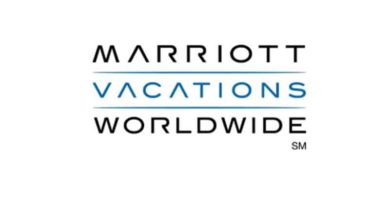Do We Need a Damage Waiver?
By Dennis DiTinno
Resort management professionals who may have previously offered damage insurance to occupants, can no longer do so. Late last year the Federal Trades Commission instituted a new law that required all agencies offering travel or damage insurance to be licensed and registered in each state that the guest called home. Obviously, this is a task outside the realm of any single company, not to mention the expense of initiating a program and annual renewals.
At properties managed by my company, Liberté Management, we had charged $45.00 to cover $1,500.00 in damages instead of demanding a $200.00 cash deposit or keeping an open, unsigned credit card voucher for damages or incidentals charged by guests. Neither of these latter two methods were very popular with guests, nor were they a very good alternative for the resort. Thanks to the FCC’s regulations, it became necessary to revert back to the ever unpopular request of a signed, blank credit card slip. Needless to say many of our guests were not pleased.
After a great deal of investigation and research concerning legal issues, we have come up with a viable solution. As we will continue to offer Travel insurance thru a similar company, we are now able to offer a “Damage Waiver” which is different than insurance. We recommend the addition of this fee to each reservation or to establish a set amount of damage deposit.
Damage Waiver in a nutshell
What it is: The essence of damage waiver is this: the renter pays the homeowner or manager a fee in lieu of putting down a security deposit and is contractually released from liability for accidental damage. The homeowner essentially assigns the fee to the manager or agent and makes damage repair a duty of that individual or company.
Why you need it: Damage waiver fees benefit managers, renters, and homeowners.
- Managers find that damage waiver fees are among their most profitable return guest services, whereas they lose money and repeat renters when administering cash security deposits.
- Renters happily pay a nominal damage waiver fee of as much as $40 or more. At Liberté, we have negotiated a $35.00 fee. This frees up the guest’s cash that would otherwise be tied up for months in a security deposit.
- Some homeowners feel nervous without a security deposit, but most find that it is easier to make their rental manager responsible rather than renters who often deny responsibility.
What’s the difference between insurance and a damage waiver?
Insurance Distinguished: Damage waiver programs can be cast as an insurance product, and some managers and homeowners do offer them as insurance (e.g., Property Damage Protection). But renter damage is relatively minor and doesn’t require risk to be spread among a large group (the key attribute of insurance) to protect renters or homeowners. When cast as non-insurance, damage waiver programs must not look like insurance.
- Insurance (which requires licensing) legally involves three parties: the insured who causes damage (renter), the person injured (homeowner), and a third-person insurer. A damage waiver generally involves two: the renter and homeowner (the manager acts as the homeowner’s agent).
- Good self-administrated damage waiver programs (non-insurance products):
- Are legally set up as two-party contracts between the renter and homeowner
- Explicitly state that damage waiver is not insurance
- May be invisible to the renter (no option, no fee), except for a note that renters will not be responsible for accidental damage if they promptly report it.
Third-Party Involvement. When insurance brokers offer damage waiver programs for managers, their commercial value lies primarily in the convenience to managers who don’t want to administer it or who don’t want to worry about the lines separating insurance and damage waiver. Insurance as protection against devastating financial exposure (a reason behind automobile insurance) is not a key benefit.
What do you need to know?
On the up-side, damage waiver programs can:
- Be an important revenue source on returning guests for the owners,
- Coexist with security deposit policies (“Pay a waiver fee or leave a deposit”),
- Eliminate substantial expenses associated with security deposits (staff time, photos, calls), and
- Improve the number of repeat renters (preventing angry renters who won’t come back).
On the down-side, damage waiver programs can:
- Increase homeowner demands that the manager fix items allegedly broken by a renter.
Damage waiver programs can be implemented in many flavors. They can be:
- Optional to the renter or mandatory,
- Built into the rent but invisible to the renter,
- As limited or broad as the manager chooses (e.g., $500 to $3,000 coverage), and
- Administered by a third party or by the rental manager.
Implementation should include the following:
- Enabling language in the listing agreement between the homeowner and manager approving the collection of Damage Waivers,
Notice to renters that sets forth their liability and obligations (prompt reporting of damage should be a condition of waiver),
- Language in any public documents that carefully describes the program as non-insurance,
- A clear description to homeowners of what constitutes damage (vs. normal wear and tear), and
- Education that prepares employees to deal with homeowner and renter claims.
The concept of damage waiver is embedded in various commercial rentals, including car rentals where, in exchange for a fee paid by the renter, the rental company essentially waives its right to collect from the renter any deductable or damages not paid by insurance. Normally homeowner’s insurance of the guest will pick up claims over $1,000.00.
Online Bonus Section
(The information below is available only on ResortTrades.com)
| MORE ON DAMAGE WAIVERS Is a damage waiver fee in your interest? The answer lies in addressing some subsidiary questions:
Volume: Burden and profit are magnified by booking volume. Some managers process hundreds of security deposit refunds weekly. Others have too few bookings to benefit. Burden: Some managers avoid the burden of processing security deposits by obligating the renter to pay for damages via credit card authorizations.
Market: If key competitors do not charge a cash security deposit, you may not be able to do so without driving some renters to your competitors. If you can’t impose a cash security deposit as an alternative to damage waiver fees, you won’t generate as many damage waiver fees.
How to set up a damage waiver program Most states have landlord-tenant laws that govern the collection and return of security deposits. Some exclude short-term rentals, others do not. Check state law to identify your legal responsibilities. If you are a homeowner “agent” under your state law, your fiduciary duty to the homeowner typically prohibits you from taking any fee associated with the rental that is not specifically authorized.
To see how other managers set up damage waiver programs, you might do an Internet search using terms such as “damage waiver vacation rentals.” Just be cautious:
The best way to start is to use the Internet to identify reputable vacation rental managers who have damage waiver programs. Talk to as many as you can to get a sense of the business logic underlying fees and the underlying administrative processes. Ask about the range of documents that address such fees and ask whether:
• the program is administered through a 3rd party • it is an insurance product or non-insurance product • it has been scrutinized by State regulators and/or attorneys • you can have copies of the forms, policies and contract clauses that address damage waiver In some communities, managers readily share this information—they often believe that homeowners tend to be more receptive when most of the major rental companies have damage waiver programs. You may find information by talking to attendees at industry conferences such as the Vacation Rental Managers Association. Of course, always, always, check with your attorney. |
Anatomy of the issue
Some managers, including myself, ran numbers that looked like this: We retained $3,500 last year from security deposits, but our costs were nearly $7,000, which included employee time for photos, renter correspondence, attempts at collections, cutting and mailing of refund checks, etc. We also upset renters who vowed never to come back. We wanted to do away with security deposits however; we believe security deposits caused renters to take better care of their units.
This focused attention on the damage waiver fees charged by car rental companies.
- Companies were insured but had to deal with deductibles and costs not paid by insurance.
- Renters were obligated to pay costs not covered by insurance, but resisted.
- Car rental companies recognized an opportunity to turn a problem into repair costs.
- They waived the right to collect such charges in return for a fee.
- Renter damage did not generate economic risk justifying more insurance coverage.
North Carolina rental managers faced a potential barrier in the form of the NC Vacation Rental Act, which barred managers from charging fees not specifically enumerated by statute. The Act allowed travel insurance, so NC managers enlisted an insurance broker to cast damage waiver fees as an insurance product. This led to the industry’s first damage waiver program. HOWEVER; it became clear that damage waiver programs can generate undesirable legal exposure if improperly implemented.
Dennis DiTinno is President & CEO of Liberté Management, Group of Companies, providing professional, turnkey resort property management along the Florida Gulf Coast. DiTinno also serves as Chairman of Timeshare Advisory and Resolution Services LLC (TARS), which provides products and enhanced services designed exclusively for the legacy market segment and new resorts seeking opportunities in sales and exit strategies.



